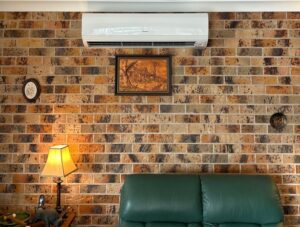Have you ever noticed how a sweltering office can drain your energy and focus? In Taree, where the heat can be relentless, air conditioning might just be the key to unlocking higher work productivity. By creating a comfortable environment, it’s possible to minimize distractions and improve overall employee well-being. But what does the research say about the direct link between climate control and performance? Exploring this could reveal surprising insights that might change how you view workplace efficiency.
Impact of Heat on Productivity
Heat can significantly reduce your productivity, making it harder to focus and complete tasks efficiently. When temperatures rise, you might find yourself feeling lethargic and distracted. This discomfort can lead to longer breaks and a drop in motivation, which directly impacts your output.
You may struggle with decision-making and problem-solving, as heat affects cognitive functions. Additionally, sweating and dehydration can further hinder your ability to concentrate. Even simple tasks might take longer to finish, causing frustration and stress.
The environment plays a crucial role in your performance; if it’s too hot, you’re likely to feel overwhelmed. By recognizing how heat influences your work, you can take steps to mitigate its effects and maintain your productivity throughout the day.
Benefits of Air Conditioning
Air conditioning creates a comfortable work environment, enhancing focus and boosting overall productivity. When temperatures rise, your ability to concentrate often plummets, leading to mistakes and inefficiencies.
With air conditioning, you can maintain a stable temperature, allowing you to stay cool and productive throughout the day. Additionally, a well-regulated indoor climate helps reduce fatigue, keeping your energy levels high. It also improves air quality by filtering out dust and allergens, which can lead to fewer sick days and a healthier workforce.
Studies on Comfort and Focus
Research shows that maintaining a comfortable indoor temperature significantly enhances your ability to focus and perform tasks efficiently. When you work in an environment that’s too hot or too cold, your concentration suffers.
Studies indicate that people tend to become distracted and fatigued in extreme temperatures, which can hinder productivity. On the other hand, a well-regulated climate allows you to concentrate better, leading to improved work outcomes.
Air conditioning can play a crucial role in achieving that ideal temperature. By keeping your workspace cool and comfortable, you’re more likely to stay alert and engaged.
Ultimately, investing in air conditioning could be one of the simplest yet most effective ways to enhance your focus and overall work performance.
Employee Well-Being and Performance
A comfortable work environment not only boosts focus but also significantly impacts employee well-being and overall performance. When you feel cool and refreshed, you’re less likely to experience fatigue or stress, which can hinder your productivity. Air conditioning helps maintain a stable temperature, ensuring your comfort throughout the day. This comfort leads to improved mood and motivation, making it easier to tackle tasks efficiently.
Moreover, a pleasant atmosphere encourages collaboration and communication among team members, fostering a positive workplace culture. By prioritizing your comfort, companies can enhance not only individual performance but also overall team dynamics. Investing in air conditioning isn’t just about cooling; it’s about creating an environment where you can thrive, ultimately benefiting everyone involved.
Cost-Benefit Analysis for Businesses
Investing in air conditioning can yield significant returns for businesses by enhancing employee productivity and reducing turnover rates. When you provide a comfortable working environment, employees are more focused and engaged, which boosts overall performance. Additionally, a cooler workspace can minimize health issues and absenteeism, saving your company money in the long run.
While the initial costs of installation and maintenance might seem high, consider the potential increase in output and morale. You’re likely to see a quicker return on investment as productivity rises and employees stay longer.
Ultimately, the benefits of air conditioning, such as improved efficiency and reduced stress, can outweigh the costs, making it a smart choice for your business in Taree.
Frequently Asked Questions
How Does Humidity Affect Air Conditioning Efficiency in Taree?
Humidity affects air conditioning efficiency by making it harder for the system to cool the air. When humidity’s high, your AC has to work harder, leading to increased energy consumption and potentially reduced cooling effectiveness.
This strain on the system can also result in more wear and tear, potentially shortening the lifespan of your air conditioning unit. In areas with consistently high humidity levels, it’s essential to ensure your AC system is properly sized and maintained to handle these conditions effectively.
What Maintenance Is Required for Air Conditioning Units?
To keep your air conditioning unit running smoothly, you should:
– Regularly clean or replace filters.
– Check for leaks.
– Clean the coils.
– Schedule professional maintenance at least once a year.
This routine maintenance will ensure the optimal performance of your air conditioning unit.
Can Air Conditioning Help With Allergies in the Workplace?
Yes, air conditioning can help with allergies in the workplace. It filters out dust, pollen, and other allergens, creating a more comfortable environment.
You’ll likely notice fewer symptoms and improved overall well-being while working.
How Often Should Air Filters Be Replaced?
You should replace air filters every 1 to 3 months, depending on usage and filter type. Regularly changing them helps maintain air quality and efficiency, ensuring your environment stays comfortable and healthy for everyone.
It is essential to monitor the condition of your air filters and replace them as needed to prevent issues like poor air circulation or increased energy consumption. Regular maintenance of air filters can also extend the lifespan of your HVAC system and reduce the need for costly repairs in the future.
Are There Eco-Friendly Air Conditioning Options Available?
Yes, there are eco-friendly air conditioning options available.
You can explore units that use natural refrigerants, energy-efficient models, and smart thermostats, helping you reduce your carbon footprint while staying comfortable in your space.
Conclusion
In conclusion, investing in air conditioning can significantly boost your work productivity in Taree. By creating a comfortable environment, you reduce distractions and fatigue, allowing you to focus better on your tasks.
With improved concentration and overall well-being, you’ll feel more motivated and engaged throughout the day. Ultimately, the benefits of air conditioning far outweigh the costs, making it a smart choice for any workplace looking to enhance employee performance and satisfaction.



